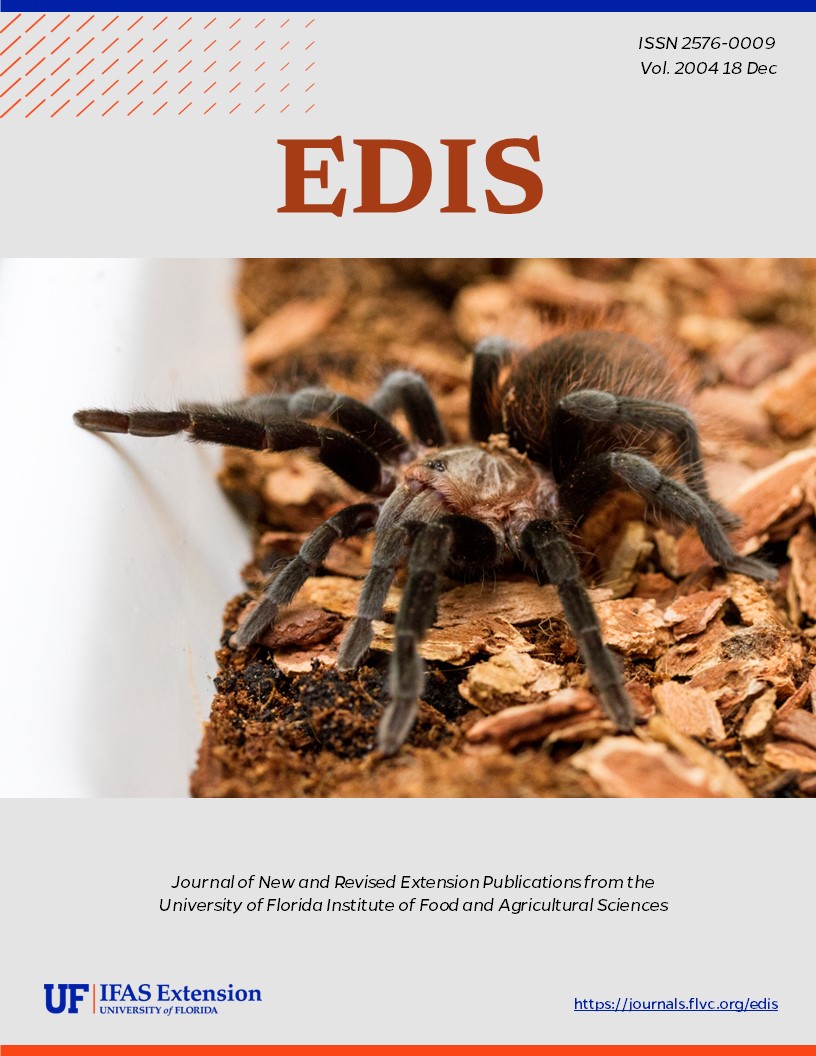Abstract
The robber flies are an abundant and diverse family within the order Diptera that are known for their predatory behavior. Asilidae diversity can be attributed to their broad distribution; most species tend to occupy a selective niche. As their common name implies, robber flies have voracious appetites and feed on a vast array of other arthropods, which may help to maintain a healthy balance between insect populations in various habitats (Joern and Rudd 1982, Shurovnekov 1962). Asilidae adults attack wasps, bees, dragonflies, grasshoppers, other flies,
and some spiders. Robber flies are particularly abundant in arid and sunny habitats, which are optimal conditions in which to observe their many morphs and behaviors. This document is EENY-281, one of a series of Featured Creatures from the Entomology and Nematology Department, Florida Cooperative Extension Service, Institute of Food and Agricultural Sciences, University of Florida. Published: January 2003.
EENY 281/IN557: Robber Flies, Asilidae (Insecta: Diptera: Asilidae) (ufl.edu)
References
Bromley SW. 1950. Florida Asilidae (Diptera) with descriptions of one new species. Annals of the Entomological Society of America 43: 227-239. https://doi.org/10.1093/aesa/43.2.227
Bullington SW. (2001). The Laphriini pages. http://www.key-net.net/users/swb/Laphriini/Laphriini.htm (15 July 2002).
Cannings RA. (1998). Robber flies (Insecta: Diptera: Asilidae). http://www.eman-rese.ca/eman/reports/publications/99_montane/robber_f/intro.html (15 July 2002).
Geller-Grimm F. (2002). Robber flies (Asilidae). http://www.geller-grimm.de/asilidae.htm (15 July 2002).
Hull FM. 1962. Robber flies of the world. Bulletin of the United States National Museum 224: 1-907. https://doi.org/10.5479/si.03629236.224
Joern A, Rudd NT. 1982. Impact of predation by the robber fly Proctacanthus milbertii (Diptera: Asilidae) on grasshopper (Orthoptera: Acrididae) populations. Oecologia 55: 42-46. https://doi.org/10.1007/BF00386716
Mahr S. 1999. Know your friends: robber flies. Midwest Biological Control News 6: 1-2.
O'Neill KM, Kemp WP, Johnson KA. 1988. Behavioral thermoregulation in three species of robber flies (Diptera: Asilidae: Efferia). Animal Behavior 39: 181-191. https://doi.org/10.1016/S0003-3472(05)80738-9
O'Neill KM, Shelly TE. Body temperature regulation in desert robber flies (Diptera: Asilidae). Ecological Entomology 13: 419-428. https://doi.org/10.1111/j.1365-2311.1988.tb00374.x
Shelly TE. 1986. Rates of prey consumption by Neotropical robber flies (Diptera: Asilidae). Biotropica 18: 166-170. https://doi.org/10.2307/2388760
Shurovnekov BG. 1962. Field entomophagous predators (Coleoptera, Carabidae, and Diptera, Asilidae) and factors determining their efficiency. Entomological Review 41: 476-485.
Theodor O. 1980. Diptera: Asilidae. Fauna Palestina: Insecta II. The Israel Academy of Sciences and Humanities, Jerusalem. 446 pp.
Wood GC. 1981. Asilidae. In: McAlpine JF, Peterson BV, Shewell GE, Teskey HJ, Vockeroth JR, Wood DM. (Eds.): Manual of Nearctic Diptera. Vol. 1 - Research Branch, Agriculture Canada, Monographs 27: 549-573; Ottawa.
Unless otherwise specified, articles published in the EDIS journal after January 1, 2024 are licensed under a Creative Commons Attribution-NonCommercial-NoDerivs 4.0 International (CC BY-NC-ND 4.0) license.

